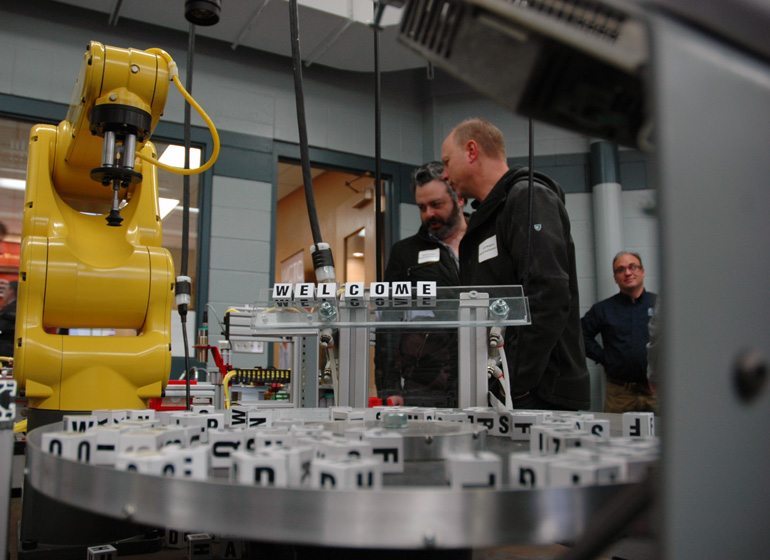The adoption of robots could displace 20 million manufacturing jobs worldwide by 2030, according to a new report from Oxford Economics. The same report also suggests Wisconsin is at a lower risk of losing jobs to robots than many surrounding states.
The England-based firm’s estimate is based on the continuation of a number of existing trends, including robots becoming cheaper than human labor, increasing robot capabilities and increasing demand for manufactured products.
Since 2000, the report estimates 1.7 million jobs have been lost to automation after accounting for off-shoring and globalization of supply chains, including 550,000 jobs in China and 260,000 in the U.S.
Most of the projected job displacement going forward is also expected to come in China, which could have another 14 million robots in use by 2030. The report also notes that the displacement of jobs is not evenly distributed among or within countries.
In lower income regions, the report suggests each additional robot will displace 2.2 jobs over the long-term while 1.3 jobs will be displaced in higher income regions.
Oxford Economics created a robot vulnerability index to measure the potential impact within countries. The index is based on an area’s dependence on manufacturing employment, current robot adoption and the productivity of its manufacturing workforce.
Index lists Wisconsin as one of a number of low vulnerability states in the U.S. while Minnesota, Iowa, Illinois, Indiana and Michigan are all upper-medium to high vulnerability.
Oxford has not released the complete data for the Index, but the firm said Wisconsin ranks 25th in the country. Indiana is the fourth most vulnerable to job displacement from robots behind Oregon, Louisiana and Texas.
Indiana and Wisconsin are both traditionally among the most manufacturing dependent states for employment, which is among the criteria the index uses. Last year, the manufacturing sector in Indiana accounted for 20.4% of employment, compared to 19% in Wisconsin. Those figures were the highest in the country with Iowa in third at 17%.
Asked to account for the difference in vulnerability between Wisconsin and Indiana, Edward Cone, technology practice lead at Oxford Economics, noted that while Wisconsin is dependent on manufacturing employment, the firm’s data suggest manufacturing practices are relatively well advanced in robotics and automation and productivity is relatively high, making activities more difficult to automate.
“The description of Indiana’s manufacturing sector would not be dissimilar, but our data suggests the dependence on the manufacturing sector for employment in this state is even higher, and the maturity of the sector in terms of robotization is relatively lower, which feeds through into a relatively higher score for vulnerability to robotization under our framework,” Cone said in an email.
The report did make recommendations for business leaders, workers, policy makers and other groups to deal with increasing robot adoption.
Business leaders should not hesitate to seek technological solutions to challenges because the pace of innovation and global competition will continue to increase, the report says. It also notes companies need to communicate their plans and intentions clearly to workers and invest in training and education to allow workers to adapt.
“(Recognize) that technological changes will disrupt the lives of many workers and take responsibility collectively to help them onto a path towards future opportunities,” the report says.
The report also suggests employees should do an audit of their own job to understand the balance between human and automatable skills.
“Unlike in previous generations, there are no jobs for life,” the report says. “Retraining and upskilling will become a normal part of the employment landscape.”


